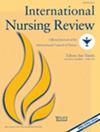Finding the paths between job demand–resources and turnover intention of community mental health nurses in Korea
Abstract
Aim
This study aimed to investigate the pathways between client violence, supervision, workplace spirituality, burnout, work engagement, and turnover intention in community mental health nurses using the job demand–resources model with the goal of reducing turnover and improving workforce retention.
Background
High turnover of nurses has a negative impact on the rehabilitation and recovery of people with mental illness. While individual factors influencing turnover intention are well studied, there is a lack of research on the dynamics between variables and what should be focused on.
Methods
Participants were 243 mental health nurses working in the community health organizations. Data were collected through online questionnaires in April 2022 and analyzed using path analysis.
Results
Client violence against nurses as a job demand directly and indirectly negatively affected turnover intention through burnout. Supervision as a job resource only directly decreased turnover intention without mediating factors. Workplace spirituality as a personal resource indirectly lowered turnover intention through work engagement.
Conclusion
We need to focus more on organizational issues first, such as workplace safety (client violence) and administrative support (supervision) related to the nurses' turnover intention, and then on individual issues (workplace spirituality).
Implications for nursing practice
The worst path (client violence to burnout) to accelerate turnover intention of the nurses must be managed and disconnected, while the best path (from workplace spirituality to work engagement) to lower turnover intention should be maintained.
Implications for nursing and health policy
Policymakers should extend Workplace Safety Legislation to community organizations less well-served by the laws and incorporate supervision into organizational evaluation items and curricula. Collaboration between community organizations and law enforcement is essential to enhance safety and support for the nurses.

 求助内容:
求助内容: 应助结果提醒方式:
应助结果提醒方式:


